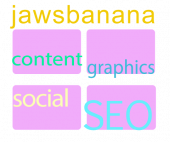With all the excitement about the working parts of advertising platforms with bidding systems, including audience targeting, display ads, dynamic ads, and ad scheduling, all of which are useful, the deeper aspects of the Google Ads algorithm are being overlooked. Webaloney is a dominant force. Much the same as if you were to sift through all of the opinions of passersby on a busy metro street who were all trying to simultaneously sell you an idea.
The idea I’m referring to is a distinction I’ve seen in various articles that the success of paid ads is primarily based on bidding versus Organic search success is based on relevancy. PPC advertising started about 20 years ago, and I came into the digital realm through a very telling paid ads background myself (11 years back). Rest assured, the cost of the bid per click on a paid ad is still exponentially outweighed by the quality score. This Quality Score number (from 1-10) can still be found, unbeknownst to some, by hovering over the Status of the keyword. This score has several times the power of the bid. This is the most prominent way a good ads manager can bring your cost, way down.
The Quality Score is based on three equal parts. These are the relevancy of the ad to the landing page, the relevancy of the ad itself (to its product or service and audience), and the Click Through Rate. The CTR is obtained by the manager’s utilization of all the knobs within paid ads and the before mentioned relevancy. In other words, the relevancy of PPC ads is very much a form of search engine optimization (SEO).
A faster, more creative, more relevant way to get results.


